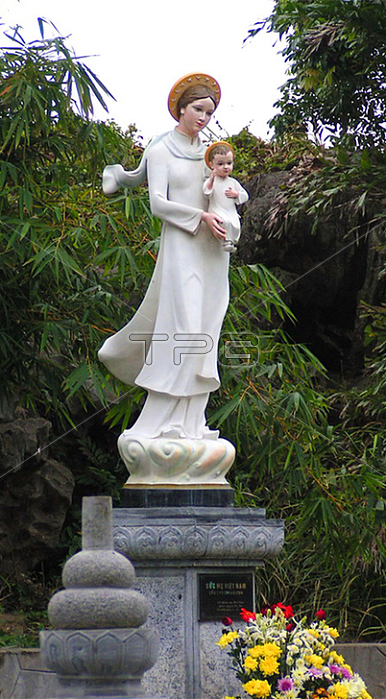
The ao dai (Vietnamese: 醥 d鄆) is a Vietnamese national costume; now most commonly for women. In its current form; it is a tight-fitting silk tunic worn over pantaloons. The word is pronounced ow-zye in the north and ow-yai in the south; and translates as 'long dress'.
The name 醥 d鄆 was originally applied to the dress worn at the court of the Nguy?n Lords at Hu? in the 18th century. This outfit evolved into the 醥 ngu th鈔; a five-paneled aristocratic gown worn in the 19th and early 20th centuries. Inspired by Paris fashions; Nguy?n C醫 Tu?ng and other artists associated with Hanoi University redesigned the ngu th鈔 as a modern dress in the 1920s and 1930s.
The updated look was promoted by the artists and magazines of T? L?c van do鄋 (Self-Reliant Literary Group) as a national costume for the modern era. In the 1950s; Saigon designers tightened the fit to produce the version worn by Vietnamese women today. The dress was extremely popular in South Vietnam in the 1960s and early 1970s; frowned upon as frivolous and borgeois in the North between 1952 and 1986; but is today increasingly popular nationwide; having become once again a symbol of Vietnamese nationalism and Vietnamese female beauty.
| px | px | dpi | = | cm | x | cm | = | MB |
Details
Creative#:
TOP20138831
Source:
達志影像
Authorization Type:
RM
Release Information:
須由TPG 完整授權
Model Release:
No
Property Release:
No
Right to Privacy:
No
Same folder images:

 Loading
Loading